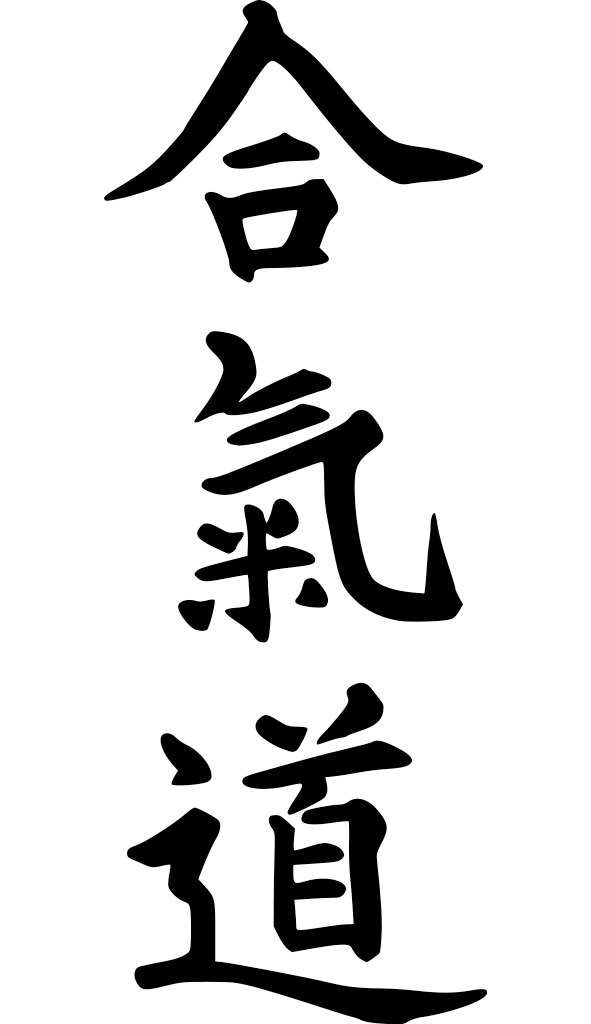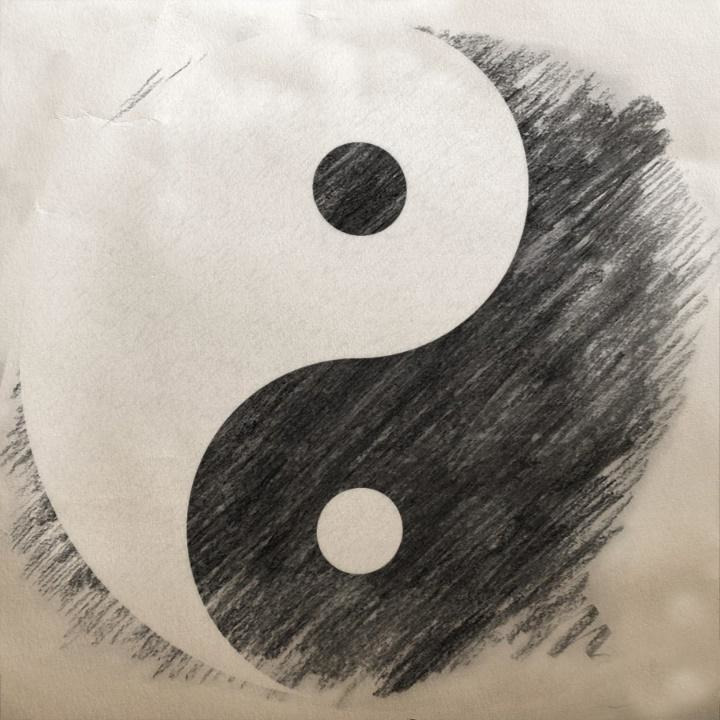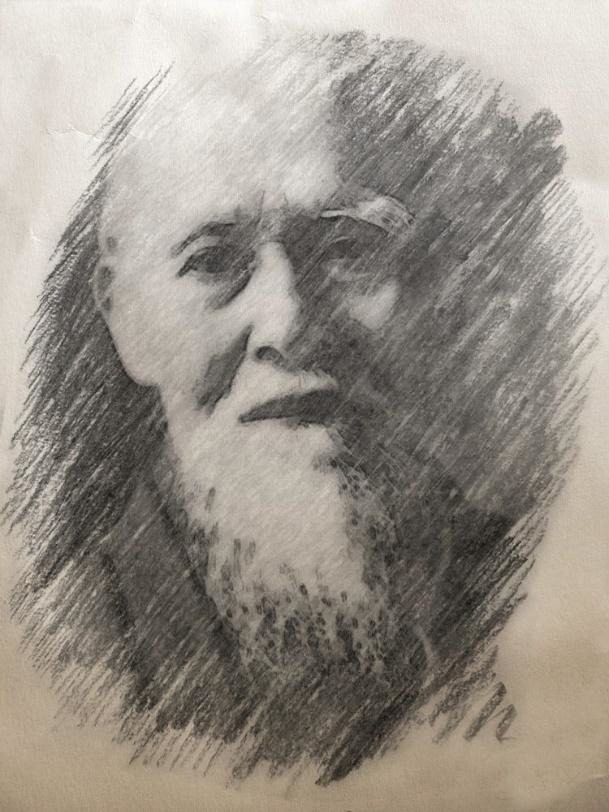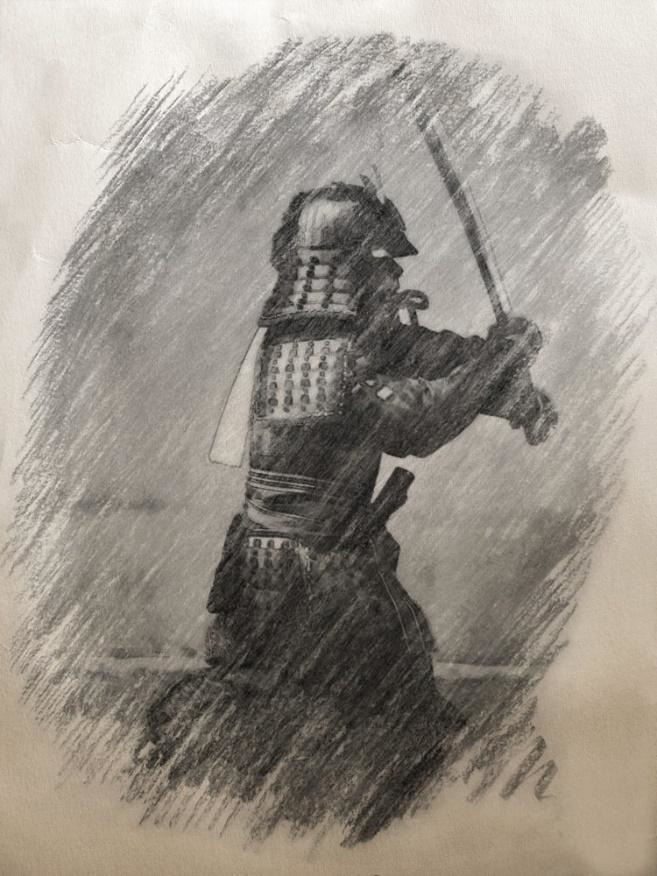
Бесплатный фрагмент - The Art of Aikido: Theory and Practice
Manual for instructors
AIKIDO: THEORY AND PRACTISE
Manual for instructors
Nurzhanbek Akmatov
Angelina Demilkhanova
translated into english by Gulizat Bekmurzaeva
When a person walks along the Samurai Path, he should not look for other ideals. The same goes for the Path itself. Therefore, it is wrong to study the Way of Confucius or the Way of Buddha and say that this is the Way of the Samurai. If a person understands this, he will listen to sermons about other Ways, but at the same time, more and more will learn his own.
Yamamoto Tsunetomo (Book One)
PSYCHOLOGICAL ASPECTS OF AIKIDO. introduction
One acquaintance asked me: «What do you feel when practicing aikido?» And I replied: «I feel spontaneity, creativity, freedom. I feel that I am a person, a living real person»

The main difference between sporting activity and martial arts roots in the principles — fundamental principles of life. Inasmuch that the martial art — is a science of life, which has a centuries-long history.
Any martial art is based on the fact that it has several components — physical exercises (kata, techniques, muscle development, reaction speed, training of attention, etc.), the psychological component — to know yourself, and then learn to control yourself (achieved by physical training, practicing with partners or a sparring system, breathing exercises, various forms of meditative techniques, etc.), and the spiritual component, which is based on understanding of the very essence of a human nature, his existence in his own world, the world with other people and the world of surrounding nature (this component is mainly based on the philosophical principles of the foundation of martial arts, which, depending on the country and continent, may be represented by Zen Buddhism, Buddhism, Confucianism, Taoism, Hinduism, etc.).
When creating aikido, the founder Morihei Ueshiba focused on harmonizing the spirit and merging with vital energy («Ki», «Chi» or «Qi» in the Chinese tradition). In this regard, great importance in aikido is given to working with Ki energy, breathing, the ability to control not only your body and yourself, use the energy of its movements against it, but also to complete the technique so as not to harm your opponent (partner).
«Genuine martial art should have nothing to do with either brute physical force, which is necessary only to overthrow the enemy, and even more than with any deadly weapon that lead the world to destruction. Genuine martial art is called upon by avoiding a fierce struggle to regulate universal Ki, preserving peace, and allowing everything to grow and develop in nature. Thus, exercises in any form of martial arts should not be a goal in itself for the destruction of the enemy, but, on the contrary, should develop a sense of love and respect for others.»
Angelina Demilkhanova.
chapter 1. theoretical aspects of aikido
From the history of aikido
After a period of feudal disunity and civil wars between different principalities, known as the Sengoku Jidai Period («The Age of Warring Provinces»), Japan was reunited into a single state. At this time, the arts of wrestling (bugei), initially aimed at defeat and destruction on the battlefield, switched to the Path of martial arts (budo), aimed at improving the person’s personality through connecting mind, body and spirit. From the beginning of the 17th century, martial arts began to transform into «Paths» of martial arts, which, in fact, were similar to the Way of the Tea Ceremony, the Way of Versification, the Way of Calligraphy, the Way of Buddha and countless other Ways, which in their pure form constitute the basis of the spiritual development of the Japanese people and are closely related to Zen Buddhism.
Under the influence of Buddhist concepts the martial arts transformed from the simple combination of techniques into philosophical «paths». Their areas of application improved from the simple goal to kill the enemy into the combination of elements related to everyday life. In other words, the paths of murder were replaced by the paths of life.

Religion in Japan is represented mainly by Buddhism and Shintoism. It is believed that Zen Buddhism, which came from China at the end of the 12th century, is becoming the most influential school of Buddhism in Japan. It was with Zen Buddhism that a radical rethinking of the martial arts of the East was associated as one of the ways of a person’s spiritual development. It was peaceful Zen (from Japanese; Skt.- dhyana — «contemplation», Chinese- chan, corean. — sleep, vietnamese. thiền thien) that managed in its conceptual approach to solve the most complex moral problems associated with the violent nature of hostilities.
There are some of the most attractive moments for the followers of practical Zen in martial arts. Firstly, Zen meditation (as well as yogic methods of psycho regulation) is passively contemplative in nature. At the same time, Zen declares the universality of its principles, the possibility to experience satori (Jap. — satori; Sanskr. sambodhi — «enlightenment») in any act of everyday life. In martial arts an activity is expressed in the most concentrated form. Mastering this field allowed Zen to create a kind of an active form of yoga, opening the way to master the practical spheres of human activity. Secondly, traditional practice of Zen required not a simple intellectual perfection, but unity of spirit and body. Strict discipline and the need for perfect mastery of the body and martial arts fighting techniques were a matter of life and death, which opened up maximum opportunities for Zen in this regard. In addition, regular and organized physical activity helped to relieve stress arising from exhausting «psychological experiences», and prevented the emergence of mental disorders called «Zen disease». Third, and perhaps most importantly, the practice of martial arts was extremely far from routine, and thus particularly prone to transition of consciousness in those states to which Zen aspired.
The requirements to consciousness in «Zen types of art» have a peculiar continuation in the characteristics of tactical and technical features of certain species. They are united by the principle of flexibility common to the Far Eastern culture. It has found physical embodiment in light, flexible and very strong armament of Japanese samurai and is reflected in the so-called «bamboo commandments». Aikido brings the «principles of bamboo» to their quintessence. As a tumbleweed is carried away in the wind, ahead of any object rushing towards it, master aikido does not destroy the inertia of the attack, but allows it to «get out of control until it is completely self-destructible». He doesn’t punish the enemy, but forces them to see for themselves that they’re helpless. (Note that everywhere the Master acts spontaneously and unconsciously, like a bamboo that naturally restores the disturbed balance).

Morihei Ueshiba
Founder of aikido, Guru Ueshiba Morihei, born December 14, 1883. Living in a turbulent time of modernizing Japan, he dedicated himself to creating martial arts that would meet the needs of ordinary people, but would not be anachronistic. Teacher Ueshiba’s foundations were based on the following principles: a great love for traditional martial arts, care that they are not misunderstood, and a deep desire to give new life to the spiritual quality of Budo. He took long path, based on constant martial arts training, to bring the truth of Budo through the events of modern Japanese history. Master Ueshiba certainly believed that the true Budo spirit could not be associated with an atmosphere of competition and struggle where brute force prevailed and the primary goal was to win at all costs. He believed that this spirit should be comprehended in the process of human perfection, both bodily and spiritual, through the accumulation of experience and training based on the spirit of martial arts. For him, only such a true manifestation of Budo had the right to exist in the modern world, beyond a particular culture or era. His purpose, deeply religious in essence, is reduced to one position: to connection of fundamental creative power of Ki permeating the universe, and individual Ki, inseparable from energy of breath of each separate person. Trough constant training of a body and a mind the condition of harmony of individual and universal Ki is reached, which is shown in dynamic movement of a stream of Ki energy, free and flowing, indestructible and invulnerable. This essence of Japanese martial arts included in aikido.
Ueshiba synthesized the ideas of aikido from the many martial arts he studied and from his mentors he met in his life. One of them was Takagi Kiathi’s ju-jutsu mentor, who would later introduce him to Taeda Sokaku, the great teacher of the Daito Ryu Aiki Ju-su school. At this school Ueshiba learned the idea of harmony of the world, the balance that underlies such cruel and dangerous martial arts, learned the mystical concept of «aiki», which later became the basis of his own martial arts system. Another meeting, which undoubtedly lies in the philosophy of aikido, was with Shintoist Deguti Onisaburo, leader of the Omoto-kyo sect («teaching the great beginning» — one of the Shinto schools). Deguti taught that a warrior’s answer must always be proportionate to the attack. In ancient times, a samurai could kill a samurai like him for a careless nod, for a sword improperly placed in the sheath, and a commoner could lose his head for no reason at all. Deguichi Onisaburo instilled a different approach to Weshiba: resistance to evil must be adequate to the attack. This idea became a basic one in aikido ideology.
In 1939 Ueshiba opened the first official aikido school at the small Shinto temple of Ivami. In 1948 he founded the Aikikai Association. The greatest growth in popularity of aikido was in the 50—60s of the 20th century.
Thus, aikido expresses the traditional culture of Japan, where it combines the so-called peaceful practices of Zen (calligraphy, tea ceremony, etc.), the principles of traditional Japanese arts of fighting, and also combines the philosophy of Zen Buddhism, Confucianism and Shintoism simultaneously.
One of the main notions of Zen Buddhism is the concept of Satori: in meditative practice, Zen is an internal personal experience of comprehending the true nature (of human) through achieving «the state of one thought».
Here is how Professor Ueshiba describes the satori which befell him after many years of rejoicing, self-mortification, fasting and meditation under the cascades. The event dates back to 1925, i.e. the time of the end of asceticism, when the ascetic moved to the village of Ayabe: «One day, walking in the yard, I suddenly felt a strange feeling, as if the earth trembled under my feet. Some golden mist began to rise from the ground, enveloping me. At the same second I felt the light in my mind and body, and it seemed to me that I could understand the language of the birds chirping around me. Suddenly, I felt close to me the presence of a great Creator in a spiritual form. A thought dawned on me: the basis of all martial arts should be the love for everything that exists on earth. From that moment on, and for the rest of my life, I understood that the whole world is now my home, that the sun and stars belong to me. High position in society, fame, honor, wealth — all this has for ever lost its significance for me».
Principles of aikido
Some of the principles specific to aikido were formulated by Morihei Ueshiba. Other principles are common to all martial arts. Aikido is the inner spiritual style of martial arts. To study this art in depth, a person must be a harmonious, spiritually and intellectually advanced person.
The philosophy of aikido is based on basic principles that can be conventionally subdivided into spirit principles and principles of physicality.
The philosophy of aikido is the philosophy of Budo.
Spiritual principles
— Aiki («spirit of unity»).
Awase is a «unity» with an opponent, which allows one to anticipate his intentions and turns each of his movements for the benefit of himself. This principle has given aikido its name: «Ai» or «Awase» means «fusion», the term «Ki» in the east means everything that surrounds us, the Ki is the spirit that fills everything around us, the «Do» is the way, the way, the method by which you bring things to life. Aikido is the Path of unity with everything around us. This principle is better known as Aiki.
Aiki is blending with the attacker’s power using Ki energy.
The basic principle of aikido is «tuning» to the enemy, allowing to anticipate his intentions and making it possible to use his movement beneficially. This principle gave aikido its name: «Ai» means «meet», «Ki» means «spirit» and «Do» means «path».
The founder of Aikido, Morihei Ueshiba, spoke of Aiki:
«Since the word «harmony» (ai) resonates with the word «love» (ai), I decided to give my unique Budo the name «Aikido». The word «aiki» is very ancient, but I put in it completely different sense, than soldiers of antiquity. Aikis are not techniques of fighting or defeating the enemy. They are the way to establish peace in the world and unite all people into one family.
There are two types of Ki: ordinary Ki and true Ki. Ordinary Ki energy is rough and heavy; true Ki is light and mobile. In order to act correctly, you must get rid of ordinary Ki and fill your organs with true Ki. The power is where Ki is concentrated and stable; where Ki stagnates confusion and anger reigns.
The source of Ki in the body is the kikai tanden, the «ki-ocean-cinnabar-field». This chakra is located in the area of the navel, the centre of gravity of the body, where the alchemic stove of the kototama is located. In terms of order of things, Morihei often spoke of the kon-haku. The concepts of kon (the conscious soul) and haku (the bodily soul) are very similar to the English concept of «higher» and «lower» (or basic) nature.
«The path is like veins spreading blood all over the body, following the natural flow of life force. If you are even the slightest bit separate from Divine essence, then you are very far from the path».
Another fundamental principle that is specific not only to aikido but also to all martial arts is the state of calm and serenity. In Japanese, it is referred to as Ansin — peace, tranquility. The Japanese word «sin» is usually translated as «peace of mind», but its meaning is actually much broader. «Sin» means soul, spirit or mind. Gaining absolute peace, complete freedom by destroying any excitement is Ansin. Ansin is the foundation of life. Without it we can’t be joyful for a moment. By achieving Ansin we can remain calm no matter what happens.
This principle calls for that in any situation, no matter how difficult it is — the state of the fight, or any stressful situation that occurs outside the tatami — you need to remain calm and cold minded. Do not give in to fear, anxiety and other negative emotions, which in a stressful situation is designed to «protect» the person from danger. Fear is natural in any stressful situation, as this fear arises before physical death. In martial arts, this principle is aimed not to abandon these natural emotions, but rather to remain calm, taking into account all aspects of their emotional state, and not to give in to panic.
A huge role in this is played by the figure of a mentor — a coach (sensei), who helps in the art of knowing not only the battle, but also oneself. Achieving this state is very difficult, but with persistent and correct training, regular spiritual practices and intellectual pursuits one can come to this. Through the right conversations and through a true master, you can gain the right understanding, and through the right understanding to come to the right work and self-improvement.
The application of aikido principles is also important in everyday life.
All our fears and anxieties are usually triggered by memories of the past or possible future. In martial arts, it is important to emphasize that every moment, every action, feeling, thought, etc. occurs in the present. And it is necessary to be more attentive to the present moment, in which it all happens. And when you begin to live more and more consciously, with a sense of every present moment, unrepeatable and unique, you begin to realize that many small worries, insecurity and fears — it’s just due to not enough attention to the present moment and lack of understanding of this moment in its entirety.
— Ichi-go ichi-e (jap. — one time, one meeting)
Ichi-go ichi-e means «just for this time», «never again» or «one chance in life.» This principle is closely related to Zen Buddhism and the concept of transience, transience in Zen Buddhism. The principle says that nothing happens many times — every meeting, every moment, every action, everything happens only once, and every moment is unique and inimitable. In aikido, the implementation of this principle helps to get rid of the «stiffness», programmed life. As a result, one learns to see the whole space of possibilities, to be more flexible, spontaneous and creative.
The development of this principle can be facilitated by meditative exercises; as well as the sensei should focus on each action — pay attention to what is happening and how partners interact during implementing techniques, pay attention to the entire process of training from the beginning to its completion.
— Katsu hayabi (jap. — victory at the speed of light)
Katsu hayabi is the highest point of martial arts mastery development, when an aikido practitioner achieves spiritual and moral perfection and becomes immune to violence. «Victory» occurs at the speed of light, that is, instantly, because the enemy can not even begin the attack. This action takes place even before the attack begins. To achieve the implementation of this principle, it is necessary to constantly emphasize the students to perform the action without intention. Then it is possible not to react, but to be in the action itself. To do it without thinking at first, and doing it later, and be in the moment and do it spontaneously, be ready for anything.
It is achieved through regular training, and the coach should focus all the time on the lack of thoughts when performing technical methods.
— Masakatsu agatsu (jap. — true victory (is) self victory). One of the principles that was described by the founder of aikido Morihei Ueshiba. Ueshiba said that «the real victory (Masakatsu) is a victory over yourself (AGATSU). The true victory is a self-control. Morihei Ueshiba explained «Masakatsu» as fulfilling one’s mission on earth: «aikido begins with you. Work on yourself and your destiny. Everyone has a spirit that can be purified, a body that can be trained in a certain way, a suitable path to follow. Keep the peace in your own life and apply aikido to everything you encounter. If your work is right, everything will work out and stand the test of time.
— Shinmu fusatsu (jap. — true budo does not kill). It is prohibited in Aikido to kill or damage your opponent in aikido. In training, special attention is paid to the fact that partners are responsible for implementation of techniques. This principle is implemented during quite a long time, because it is necessary to master not only the technical methods, but also to understand the peculiarities of their power, be able to distribute it and take care not to hurt your partner.
— Takemusu — a concept that Morihei Ueshiba developed in the last years of his life. «Take» is the same Japanese symbol as «Bu» in bushido, which means «military». «Musu» means to give birth or create. Sensei used the term «aikido takemusu» as a way to explain the highest level of aikido — the ability to spontaneously use and create effective aikido techniques in any given situation. The highest degree of skill, freedom from technical framework, spontaneous and creative implementation.
This principle should be trained with the help of Randori (free attacks) and Juwaza, regardless of the level of training and duration of the classes. Beginners can devote 5—10 minutes to this principle once a week, for example at one of the trainings. Masters — one of the trainings completely.
— Zanshin (jap. — remaining mind). A state of full attention and constant readiness. In Japanese martial arts, the word «zanshin» is very often used. In aikido, this term can be heard when performing basic movements, aikido techniques, and when performing free techniques (jap. — Jiyūwaza). During aikido practice, the usual method of Zanshin practice is to focus not only on the implementation of techniques with the uke or opponent, but also to keep the attention and see other attackers.
This principle is practiced by practicing the technique with several partners at the same time.
— Yamabiko. The term is supposedly taken from a poem by the founder of aikido. In Japanese folklore it’s a mountain god, spirit and yokai. In literal translation «yamabiko» means «echo.» In aikido, this principle means challenging an attack, not waiting for it. Instead of waiting, for example, for Shemen uchi (frontal attack), we provoke uchi to attack. This is like a natural response, just like when you stretch out your hand to say hello, the other answers you almost automatically. Someone smiles at you, and you smile back. Someone puts their fist to your face, and you pull away or raise your hands.
— Kokyū-Ryoku (jap. — Power of Breath). A basic concept in martial arts based on the idea of breathing power. Morihei Ueshiba said: «The fundamental factor in life is I-KI, «Breathing’. The U kototama unfolds from the sound-seed of the SU, giving form to the breath and exhalation of life. The exhalation is circular, has the form of a water element and is a basis of Breath of the Sky. The breath is a square in the form of a fire element which is a basis of Breath of the Earth occurring deep in the body. Breath of the sky is a breath of the sun, the moon and stars. Breath of the Earth is a breath of ebb and tide. When the Breath of the Sky and Breath of the Earth completely merge, we receive the Human Breath, an inexhaustible source of our life. Breath provides us with the means to pronounce kototama, and the power of breath allows us to perform all techniques of aikido: everything in the sky and on earth breathes. Breathing is the thread that binds the universe. When the countless variations in the breathing of the universe become palpable, separate (individual) techniques are born».
Technical principles of aikido

— Hanmi (jap. — half body)
The Hanmi principle describes the idea that in relation to an opponent, the body should always be in a comfortable position. The body should be turned only halfway, then it is possible to protect yourself from attack, to get away from the attack in time and to control your movements freely and quickly.
— Chūshin-ryoku (jap. — center of power).
The Chūshin-ryoku is the center of power. It’s the essence point of aikido. It means «to feel centered» not only physically, but also psychologically. It’s like the «center of spiritual and physical strength» of a man. Having mastered it no matter what situation a person gets into in his or her life, whether it is daily aikido training or life difficulties outside the tatami, one has to learn to be in its center and unite around its spiritual, physical and psychological center.
Бесплатный фрагмент закончился.
Купите книгу, чтобы продолжить чтение.